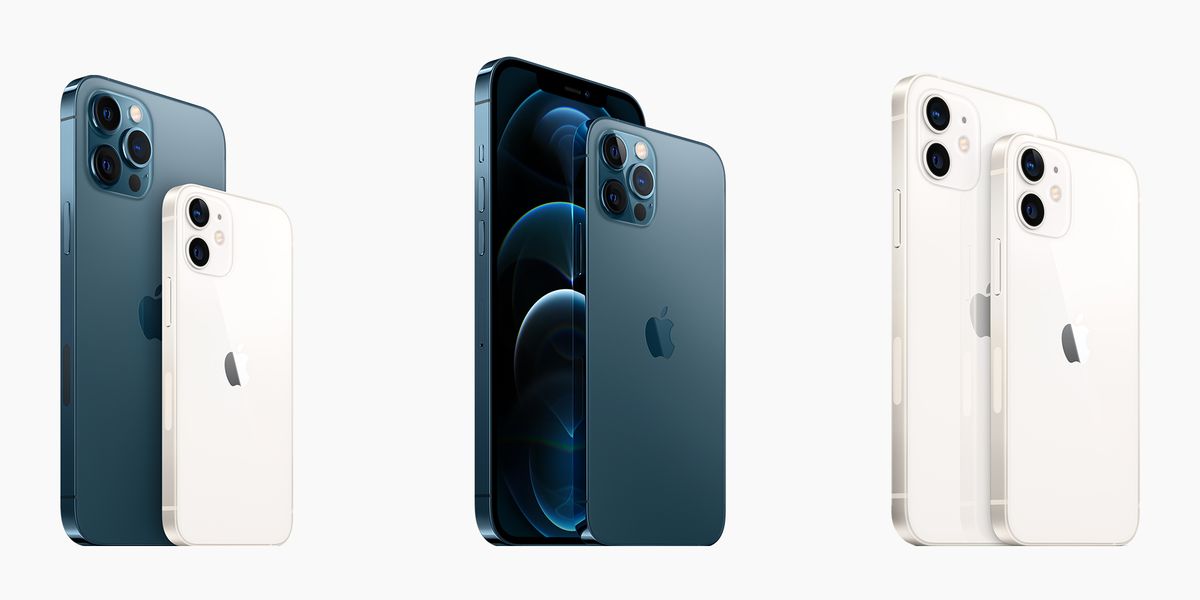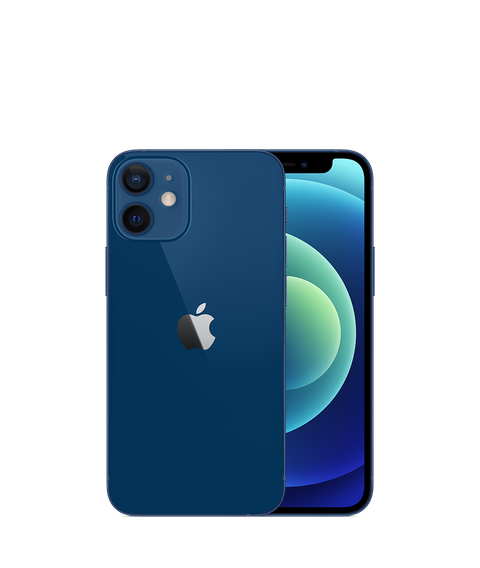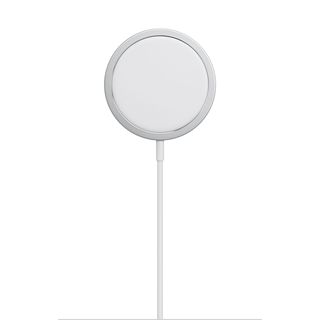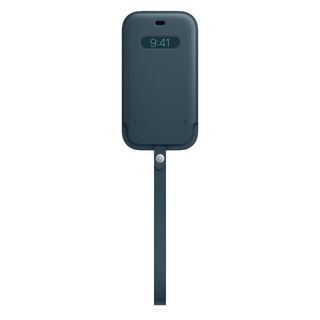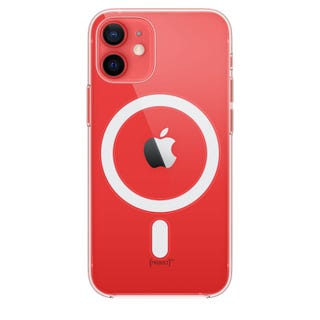Products You May Like
Another year, another Apple drop.
Just in time for the stress of holiday shopping to make your 2020 a little bit worse, Apple has dropped two new phones that everyone is buzzing about. The new styles bookend its 12 line, following the iPhone 12 and iPhone 12 Pro release back in October. Available for purchase starting today, Apple introduced the iPhone 12 mini (starting at $699) and iPhone 12 Max Pro (starting at $1,099, Apple’s most expensive phone to date), simultaneously the smallest and largest phones ever offered by the tech giant.
The new phones follow the same trajectory as many of Apple’s notable launches: they are similar to its last iteration, but slightly better. But we honed in on the details that matter to us, from its new and improved camera to the droppable technology that makes it perfect for butter fingers like you and me. See how we break down the new phones, here.
Design and Technology
Both phones boast better 5G capabilities. With faster download speeds, you can FaceTime in HD, but unfortunately you can’t lie to your boss that your Zoom video went out. They also all have A14 Bionic, the fastest chip in a smartphone, and each has an edge-to-edge OLED display super retina XDR screen, which means you’re getting as much screen as their sizes allow.
The iPhone 12 phones compared to the iPhone 12 Pro styles vary slightly in performance. The Pros have better storage, but noting the minute technological differences is just splitting hairs. IMO, the real dissimilarity comes down to looks: the iPhone Pro Max phones are available in four matte colors, while the minis come in shiny bright colors.
Sizing
When it comes to sizing, the new iPhone 12 mini and iPhone 12 Max is what’s getting our attention. For those of us with small hands who have been gorilla gripping our current models, the former style is for you. Standing small at 5.4 inches, it’s the smallest, thinnest, and lightest 5G phone on the market. Alternatively, if you want a really big phone, the iPhone Pro Max is mammoth. At 6.7 inches, it’s the largest phone Apple has ever offered. Personally, I found it a little unwieldy in my small hands, but it does make watching YouTube in bed a much more cinematic experience.
The real selling point for the iPhone mini is its nostalgia factor, with many Twitter users comparing the new iPhone mini and the OG iPhone 5, which was released in 2012.
This content is imported from Twitter. You may be able to find the same content in another format, or you may be able to find more information, at their web site.
Upgraded Camera
When it comes to choosing a phone based on its camera, it’s a no-brainer that Apple edges out its competitors. The entire range of iPhone 12 phones have improved cameras with ultra wide lenses and Dolby Vision HDR video recording. But, say it with me: the Pro Max line is only slightly better.
The real main difference between them is the LiDAR Scanner introduced into the Pros. It’s similar to the time-of-flight (ToF) sensors seen on many Android phones, in that it senses depth and range in a photo, which can also be applied to some VR apps. There’s a lot of complicated tech lingo about what it truly does, but I’ll simplify it: Portrait Mode is about to be lit. Literally. The iPhone Pro and Pro Max’s Night Mode capabilities are drastically better, and you’re going to have so many bokeh lighting effects on your grid that your friends will be asking you to stop.
To be clear, the differences in both cameras are minute. To be even clearer, the difference between the iPhone 12 cameras and my year-old iPhone 11 camera is also slight (with the new Night Mode upgrade being the stark exception). In other words, yes, absolutely, the cameras on the 12s are good, but so are those on the iPhone 11.
Extra Durability
Those of you with cracked screens should pay attention here, because the entire set of iPhone 12 phones have this key feature: they all boast Ceramic Shield front covers. That means new iPhones have an increased drop performance of four times. Get reckless and drop away! (Editor’s not: We will not accept responsibility for costs you may incur as the result of you dropping your phones.)
Accessories
Citing environmental reasons (which has been challenged by the public) the entire lineup of 12 phones do not come with a wall charger. Instead, the brand is pushing MagSafe technology. Each phone has a built-in magnetic snap on the back, which optimizes alignment for faster charging, and users can purchase Magsafe chargers on Apple’s website. Easily placing your phone on your nightstand to charge does sound tempting, but you can also always stick to the iPhone’s traditional USB-C to lightning cable (we all have about five of them crawling through our apartments anyway).
Apple is also releasing new MagSafe-friendly accessories, including cases and a wallet that magically snaps to the back of the iPhone 12 line. Expect the MagSafe ecosystem to expand, too. Right now there’s a leather sleeve that we predict will be popular with the same crowd of dads who wore cell phone belt clips.
Overall Thoughts
If you weren’t around for the iPhone 11 and are looking to upgrade, the entry-level iPhone mini (and by proxy the iPhone 12) could be for you. For the relatively low price, you don’t sacrifice much in terms of technology and the camera’s capabilities are almost as good. Alternatively, if you’re itching to get the latest and greatest, the iPhone 12 Max Pro is the obvious choice.
This content is created and maintained by a third party, and imported onto this page to help users provide their email addresses. You may be able to find more information about this and similar content at piano.io
